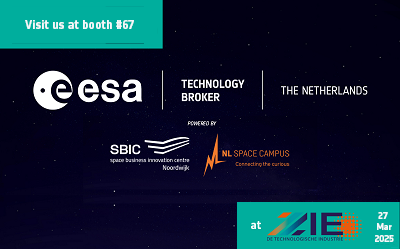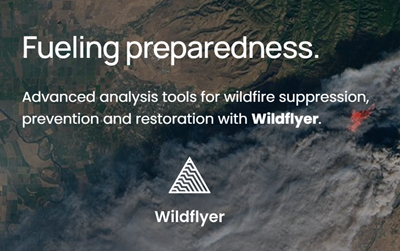The world is seeing a new generation of land survey tools that are increasingly replacing traditional methods, such as total stations, manned aerial photography and satellite imagery. Celemation is developing a new robotic aerial scanner and is on a mission is to increase adoption of these technologies by making it easier to use. Participating in the programme of ESA’s Dutch business incubator (ESA BIC Noordwijk), the startup’s product Celemation RAS100 creates an accurate 2D and 3D scan of any location. Carry the equipment onto the site, select the area to be scanned and the system does the rest.
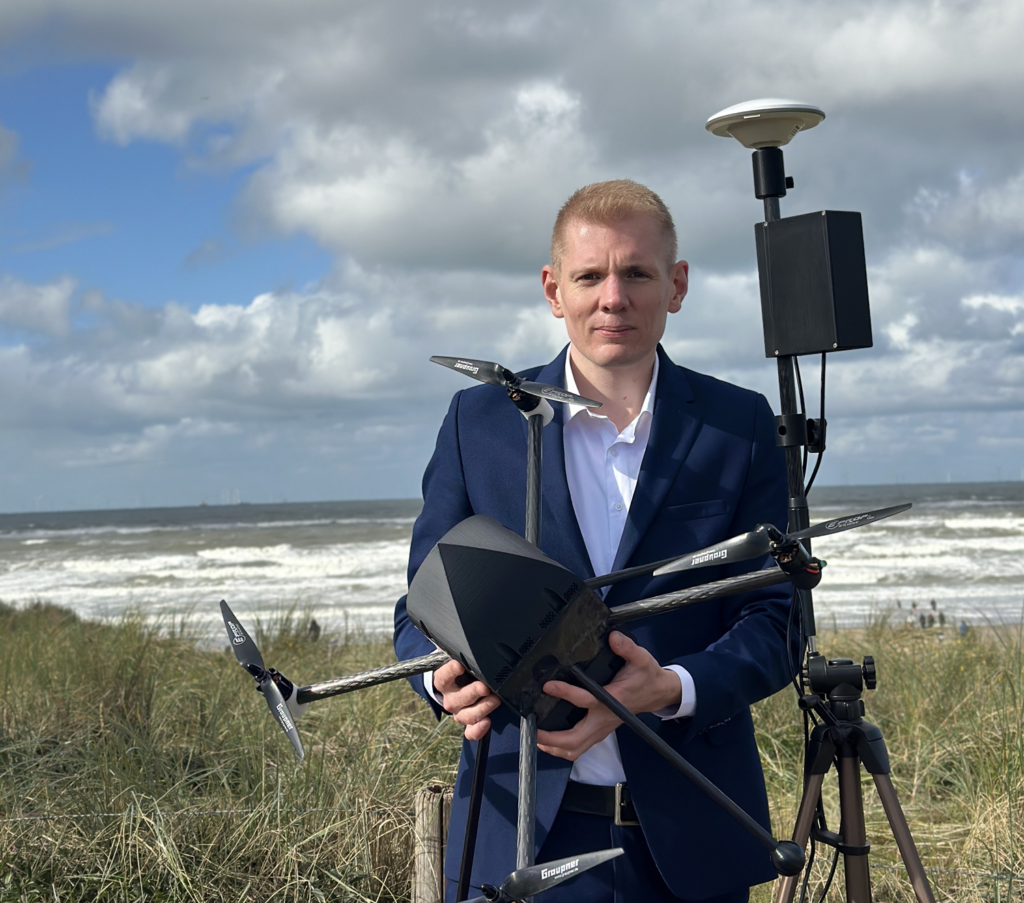
The process of creating 2D and 3D scans of outdoor locations is getting simplified thanks to the all-in-one solution offered by Celemation. The startup’s founder is Joël Meijering, who has a background in both software development and mechanical engineering. He is on a mission to increase commercial use of small and portable unmanned aircraft systems (UAS). The startup was founded in late 2022 and began incubation at ESA BIC Noordwijk in June 2023. We caught up with Joël to find out more.
How did your company come about?

I originally had the idea when I saw a drone flying and just holding still in the air, around 2014. It was clear to me and many others, that this is a very flexible and generic technology. You can do so many commercial things with it. This is when my interest in UAS started. Over the years, I have gained quite a bit of experience working with UAS and the tech behind them. I was attracted to it primarily out of pure technical fascination, but with a strong belief in the commercial value of the technology.
Recent developments, such as the newly available accurate, small and low-cost satellite positioning sensors, clear EU-wide regulation and better components (cameras, batteries, motors, radios, software), has led me to getting Celemation off the ground.
How do you describe the focus of Celemation?
Worldwide, we are seeing a new generation of tools being used for aerial mapping, land surveying, volume measurements and related activities. Traditional methods rely on manual measurements being taken using a total station, for which the surveyor has to walk to each measurement point on foot, manually needing to enter and label each point. Other commonly used traditional methods involve the use of high-altitude aerial photography with manned aircraft and satellite imagery.
The advantage of using a small UAS for these activities is that you can capture the whole site in a single automated scan, at the level of detail needed, more frequently than what was possible before. This produces data with less manual labour while also offering significantly more detail.
What steps did you take to get to ESA BIC?
I found out about ESA BIC while looking for business clubs, to meet other entrepreneurs and to develop some connections – you have to start somewhere. After joining a webinar, I spoke to the people behind SBIC. I later visited one of their networking events to get a feel for the community, here I also spoke to some of the alumni of the programme. I then proceeded to write my business plan and apply to the programme.
What is your space connection?
The project is possible thanks to the availability of cost-effective and accurate satellite positioning systems. With these new modules, it is now possible to achieve the accuracy required by the surveying industry. Therefore, Celemation can be considered a spin-out of a space technology, GNSS satellites. In addition, in the space industry, including in the SBIC community, many companies are specialised in the processing of satellite observation data. This is a big market. The 2D scan produced by the RAS100 can be considered a high-resolution drop-in replacement for satellite imagery. That is why this is a community which I am happy to be a part of.
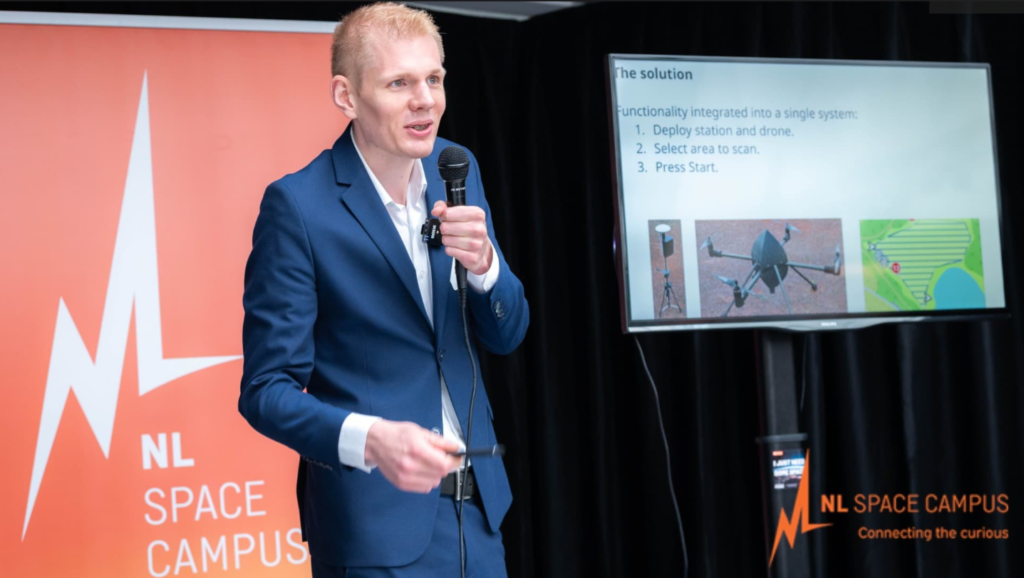
What will your first prototype look like?
The system consists of a tripod-mounted base station with a touch-screen interface paired with a small UAS. Both are portable and small enough to fit in any passenger car. It has the ability to do 2D and 3D scans. We develop the hardware and software in-house, including production of the vehicle and its support equipment. To achieve this cost-effectively, we rely on the ecosystem of high-quality hardware and software that is available. Celemation’s all-in-one portable base station means the customer doesn’t need to own and learn to use the plethora of equipment that a UAS crew needs today.
How will your product be used on-site?
The goal is to offer a competitive option for those performing land surveys, outdoor inspections, aerial mapping and related activities. One of the key advantages is that the operator no longer needs to walk to each measurement point on the site. The surveyor also won’t need to input measurements, look at construction blueprints or label the measurements in the field. The base station and UAS are simply placed in one spot, the site perimeters fed into the touch-screen interface and then the user can let the system perform a full scan of the site. The scan produces both a 2D and 3D model, which are sent to the customers’ systems for further processing.
What approach will you take initially?
In 2024, we will go to visit the customer’s construction site or visit the infrastructure and scan it for them. The ultimate aim is for the customers to scan it themselves. They don’t want to rely on me. But it’s a gradual path. The mission is to increase adoption of these technologies by making it easier to use.
What will your focus be during incubation?
Primarily, the focus is on product development. The process will involve lots of gradual, technical tweaks to make the system robust enough to be used as a standalone product. The current focus is on foundational aspects, such as the reliability of the system. We are working towards the point where we can start giving demonstrations. We are planning to be able to perform initial commercial operations before the end of March 2024. Customer acquisition activities will start by then.
What parts of the programme have you been appreciating so far?
Being connected to the other startups is great. I really love to come here and meet with the other people participating in ESA BIC. It is incredibly valuable to hear from other entrepreneurs during our monthly meetings and the community lunch. That’s exactly why I joined – to be a part of this community.
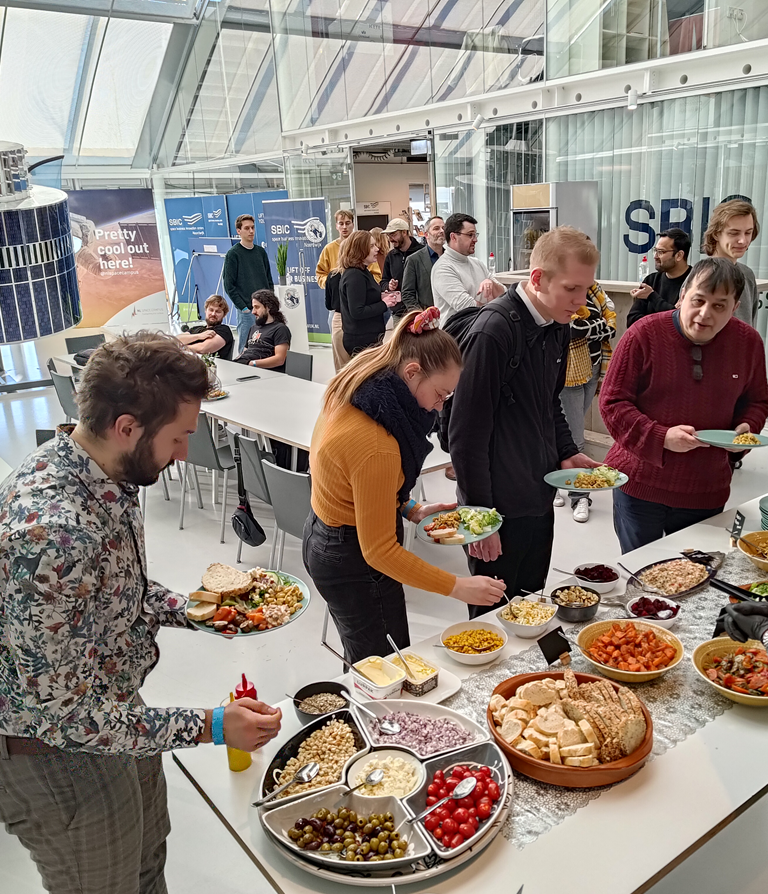
What are the benefits of being at ESA BIC?
It is great to have access to the wider network of ESA BIC alumni. One of the most valuable things when I started here was having contact with Soilspect and Mapture. You can do very extensive market research but is getting advice from startups who are in a similar field and have taken a comparable journey is invaluable. Just bumping into them by chance at the coffee machine was a real turning point.
Any encouragement for people applying to ESA BIC?
ESA is making resources available to new businesses. The mission of the ESA BIC programme is to promote further increase of the fertility of the local space industry, including spin-out companies such as Celemation. If your business qualifies, and if you appreciate being able to fly the flag of ESA’s BIC programme, then this incubator can provide that for you. This is an incredibly fertile place with a lot of extensive resources, resources that we are extremely privileged just to have access to.
ABOUT CELEMATION
Celemation was founded in late 2022 by Joël Meijering to produce a robotic aerial scanning system. The system comprises of a portable unmanned aerial vehicle and a tripod-mounted base station. After selecting the area to be scanned, the vehicle flies over the site, producing a detailed 2D and 3D scan. The integrated unit offers seamless processing of collected data. In mid-2023, the company was selected to join the 2-year programme of the Dutch business incubation centre of the European Space Agency, ESA BIC Noordwijk. celemation.com
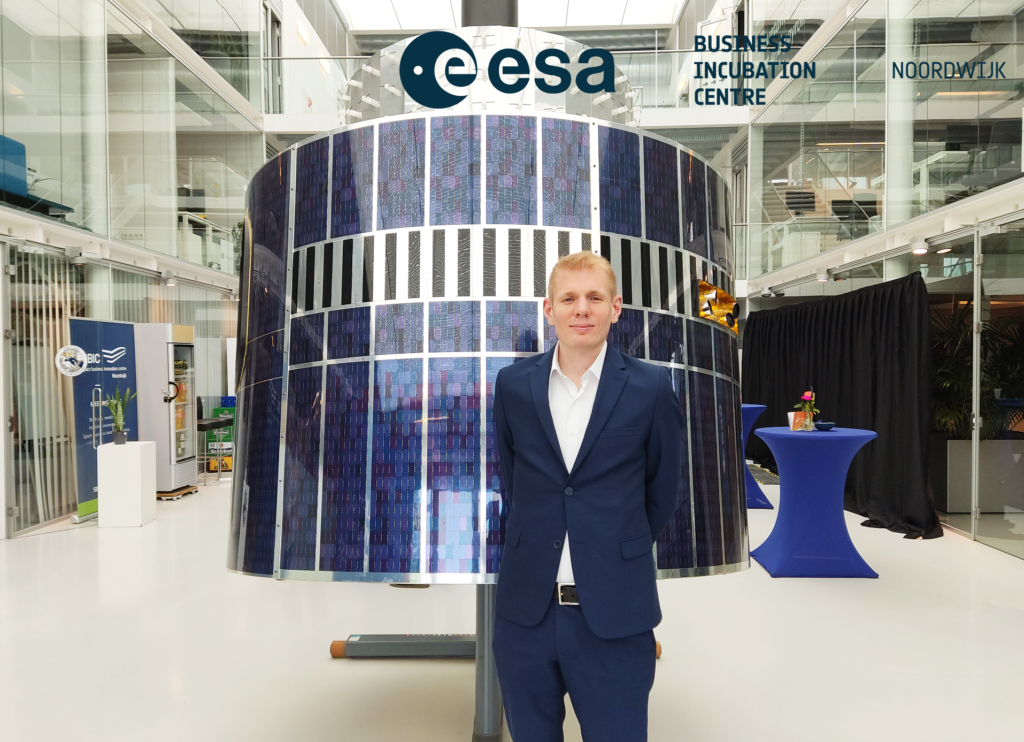
Prepare your space business idea for lift-off!
Don’t miss out on the support that can lift off your space business. Before the ESA BIC 2024 spring deadline, you can join the info sessions (online webinars and in-person at SBIC) to find out more. Start preparing your application.
